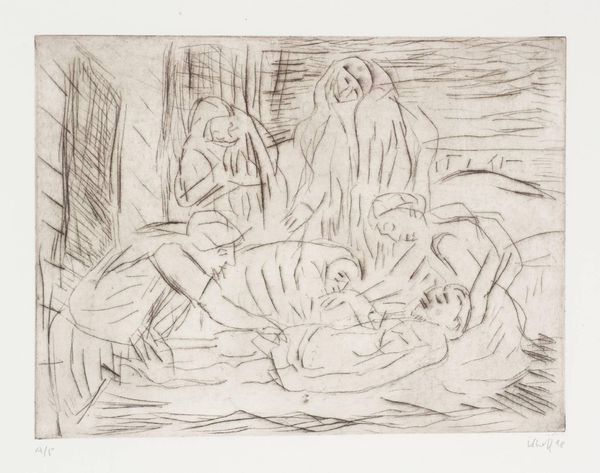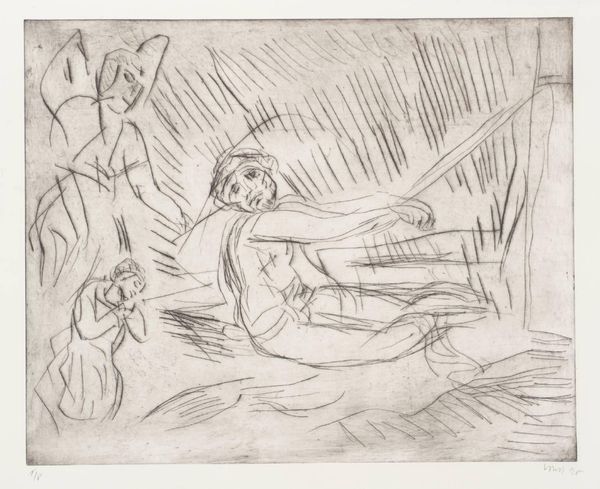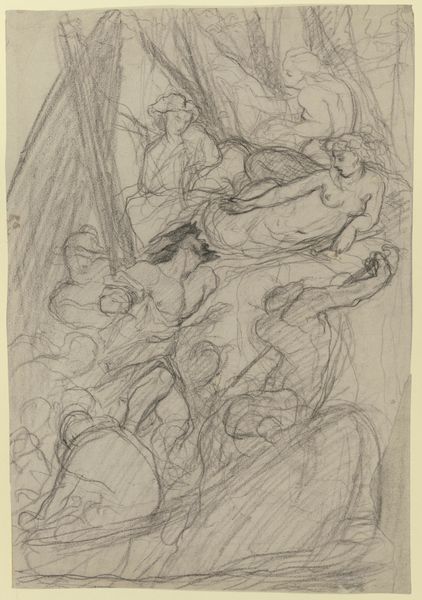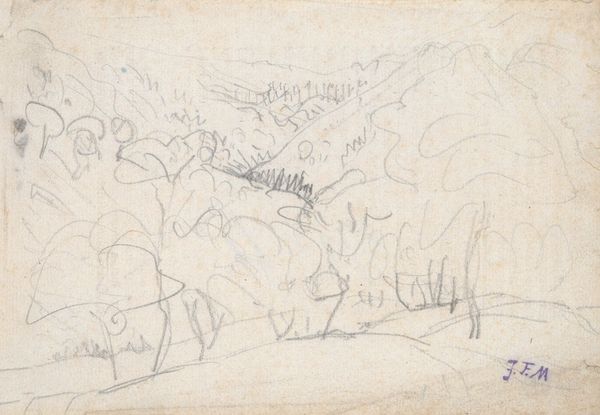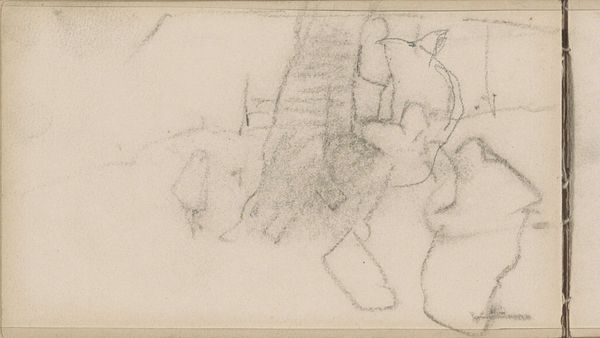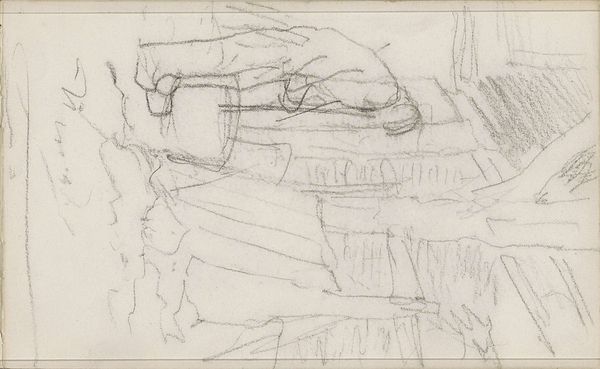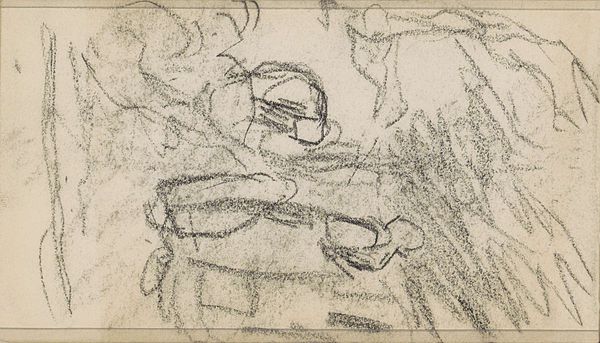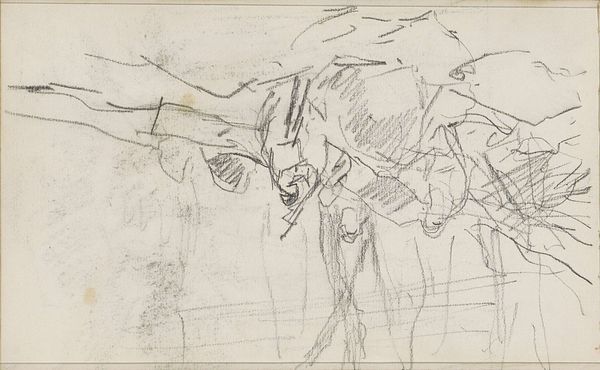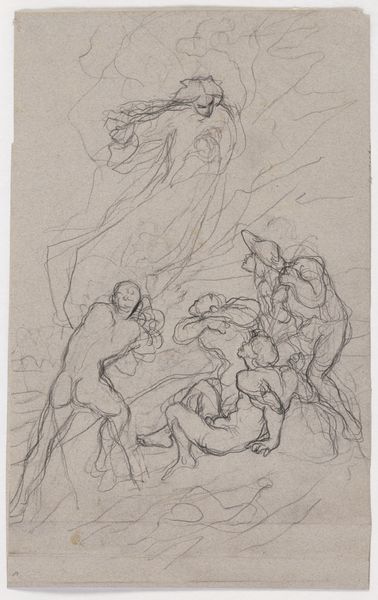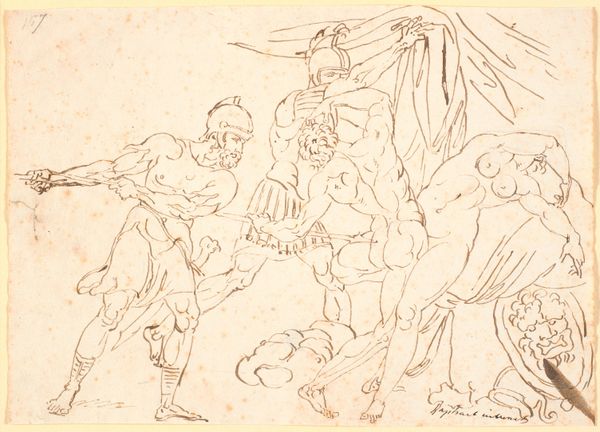
Copyright: © Leon Kossoff | CC-BY-NC-ND 4.0 DEED, Photo: Tate
Editor: This is Leon Kossoff's "The Blinding of Sampson," held at the Tate. The raw lines make the scene feel brutal. What symbols do you see at play here? Curator: Notice how Kossoff uses line to convey not just form, but also violent energy. The blinding itself is a potent symbol, isn’t it? The loss of sight, both literal and metaphorical. What might that signify about power, or vulnerability, in your view? Editor: Perhaps the vulnerability of the defeated? Stripped of power and sight. Curator: Precisely. And consider the enduring nature of that symbol. Blindness recurs throughout history, often signifying a deeper kind of insight gained through loss. Think of Tiresias, for example. Editor: It's fascinating how a single image can hold so much symbolic weight across cultures. Curator: Indeed, Kossoff taps into something primal. Loss, betrayal, and the consequences thereof. A story retold through visual language.
Comments
tate 7 months ago
⋮
http://www.tate.org.uk/art/artworks/kossoff-the-blinding-of-sampson-p11709
Join the conversation
Join millions of artists and users on Artera today and experience the ultimate creative platform.
tate 7 months ago
⋮
This print is one of many etchings executed by Leon Kossoff in response to, and literally in the presence of, oil paintings by old masters; in this case The Blinding of Sampson, 1636, by Rembrandt Harmenszoon van Rijn (1606-69), owned by Das Städelmuseum, Frankfurt. This print was never published as an edition; Tate owns the second trial proof.
